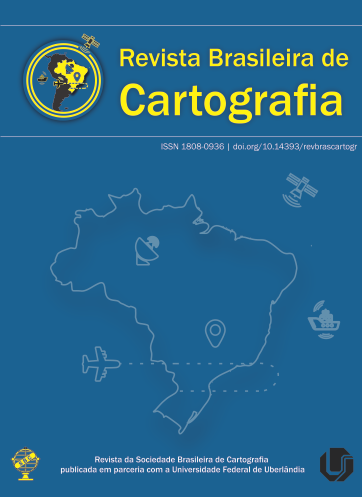Technical Characteristics of Brazilian Thematic Cadaster of Archaeological Sites
Main Article Content
Abstract
Territorial cadastres consist of public inventories of data related to the graphic representation of parcels and territorial objects. Complementarily to the generation of the cadastral database, there is a need for the legal characterization of the represented territorial feature represented by parcel or territorial object. The territorial object is defined as a portion of land with homogeneous conditions at its limits, according to its purpose. Therefore, any natural element, artificial or restrictive by legislation on the land - such as water courses, areas of environmental conservation, and even archaeological sites potentially fit as a territorial object. The identification and mapping of these elements requires specific knowledge, mobilizing the participation of specialized institutions, configuring the so-called thematic territorial cadasters. Thus, the present article focuses on the National Register of Archaeological Sites - CNSA. The CNSA is the cadastral system that contains the spatial information of the archaeological sites located in the Brazilian territory, currently presenting about 27 thousand records, being managed by the National Historical and Artistic Heritage Institute - IPHAN. In this context, the article characterizes and analyzes on technical way the thematic cadaster linked to archaeological sites. As a result, it is notorious that the CNSA has weaknesses in the process of geometric measurement considering its limits by not establishing minimum criteria and technical standardization in the referred process. Thus generate cartographic uncertainties representation and consequently legal insecurities in subsequent use of this data.
Downloads
Metrics
Article Details
Authors who publish in this journal agree to the following terms:
- Authors retain copyright and grant the journal right of first publication with the work simultaneously licensed under a Creative Commons Attribution License that allows others to share the work with an acknowledgment of the work's authorship and initial publication in this journal.
- Authors can enter into separate, additional contractual arrangements for the non-exclusive distribution of the journal's published version of the work (e.g., post it to an institutional repository or publish it in a book), with an acknowledgment of its initial publication in this journal.
- Authors are permitted and encouraged to post their work online (e.g., in institutional repositories or on their website) before and during the submission process, as it can lead to productive exchanges, as well as earlier and greater citation of published work (see "The Effect of Open Access").





